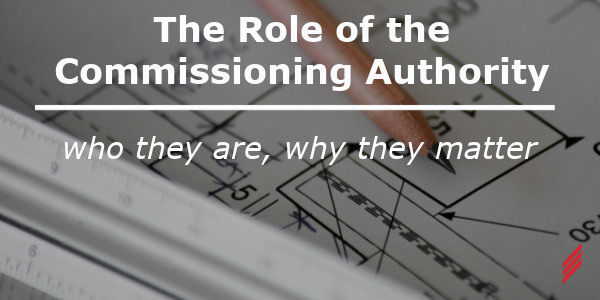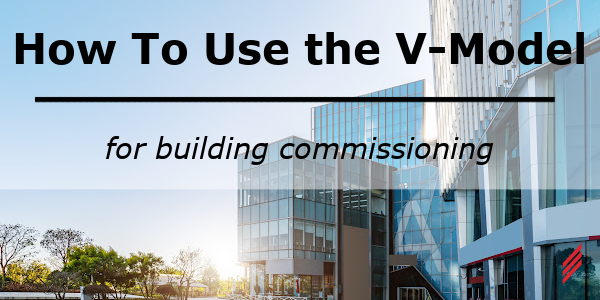Commissioning: The Payback
by Jon Edgar on Dec 14, 2023 10:30:00 AM

Moving into my new home, I was greeted by an unwelcome surprise in the form of my first electric bill— a staggering amount exceeding $500. This unexpected financial shock left me baffled, especially given the size of my 1900-square-foot house and the typical costs in the area. Skeptical of the builder's explanation that this was standard, I decided to investigate further. A call to my HVAC contractor confirmed my suspicions; my monthly bill should have been significantly lower. After a brief inspection, it was evident that an issue with my HVAC system was to blame, which was promptly resolved.
Subsequent bills rarely exceeded $200, but the experience left me pondering what could have prevented this costly surprise. It was clear that proper system checks, or commissioning, before taking ownership of my house would have spared me from this hefty initial bill.
Commercial building owners understand the importance of mitigating such issues through a process known as building or facility commissioning. This proactive approach involves a Commissioning Authority ensuring that all building systems align with the Owner's Project Requirements (OPR) and operate as intended, thanks to meticulous inspections and testing. While commissioning requires an upfront investment, the long-term benefits are undeniable. In this blog, we'll explore the advantages of commissioning, from cost savings to system performance and occupant well-being, revealing how this practice enhances sustainability, longevity, and overall comfort in buildings.
The commissioning process does add to the upfront costs of the building construction process, but it has been shown that commissioning will result in long-term savings. Performing commissioning offers paybacks in many forms, particularly in building systems or industrial processes. One of the major benefits of commissioning is Cost Savings.
While commissioning requires an upfront investment, it can yield significant cost savings over the operational life of a facility. By optimizing energy consumption, reducing maintenance needs, and preventing costly downtime, commissioning helps organizations save money in the long run. The energy savings alone often justify the cost of commissioning. According to the Department of Energy’s, Commissioning for Federal Facilities publication ¹:
“From the aspect of energy savings, commissioning has proven itself time and again. In existing buildings, whole-building energy savings average about 15 percent at a cost of about $0.27 per square foot and with a payback of about 8.5 months. In new construction, commissioning costs about $1.00 per square foot and pays back within about 4.8 years.”
The following is a list of potential benefits that commissioning provides the Owner and End-users:
- Regulatory Compliance: Commissioning helps ensure compliance with relevant building codes, standards, and regulations. By verifying that systems and processes meet specific requirements, commissioning helps organizations adhere to safety guidelines, environmental regulations, and energy efficiency standards. This mitigates potential legal and regulatory risks and promotes a positive image and reputation for the organization.
- System Performance: Commissioning ensures that the installed systems and equipment function as intended and meet the design requirements. It helps identify functional issues that cause performance issues. Such matters may include incorrect installation, faulty equipment, out-of-calibration instrumentation, or improper system integration.
- Energy Efficiency: Commissioning is vital in maximizing energy efficiency. By fine-tuning and optimizing the operation of building systems such as HVAC (heating, ventilation, and air conditioning), lighting, and controls, commissioning helps identify energy-saving opportunities and improves overall system performance. This can lead to significant energy cost savings and reduced environmental impact.
- Occupant Comfort and Health: Properly commissioned systems improve occupant comfort. Commissioning ensures that HVAC systems provide adequate thermal comfort, proper ventilation rates, and indoor air quality, enhancing the overall indoor environment. By addressing issues like temperature imbalances, inadequate air circulation, leaking ducts or poor humidity control, commissioning helps create healthier and more comfortable spaces for occupants. Bad indoor air quality and thermal comfort can lead to reduced overall worker productivity.
- System Longevity: Commissioning helps identify and address potential issues early on, reducing the risk of premature system failures or repairs. By verifying proper equipment operation, commissioning improves the longevity and reliability of building systems, reducing the need for frequent replacements and extending the service life of the equipment.
- Complete System Documentation: Through the commissioning process, building owners and staff gain a better understanding of the installed systems and their operation. Training and knowledge transfer are key objectives of the commissioning process in order that facility operations and maintenance personnel will be able to operate and maintain the systems effectively and troubleshoot issues.
- System Accessibility: Commissioning helps ensure that the parts of installed systems that are required to be accessed for operation and maintenance are physically accessible. The system controls need to be safely accessible to operators with reasonable accommodation. Methods for preventing unintended access to the system controls will be verified through the commissioning process.
- Ensuring Owners’ Requirements: Commissioning ensures that the owners are provided with the facility and systems that were specified in the OPR.
In summary, commissioning offers a range of benefits, including assurances that the building and included systems are fit for use and constructed and operate in a manner that meets or exceeds the Owners’ Project Requirements. It ensures that building systems will be sustainable, durable, and comfortable for occupants.
¹ US Department of Energy, Federal Energy Management Program, and Enviro-Management & Research Inc. Commissioning for Federal Facilities: A practical guide to building commissioning, recommissioning retro commissioning and continuous commissioning pp. 6
About the Author
Jon Edgar is the Commissioning and Qualification Team Lead for the Apex, NC office. He provides qualification and compliance consulting services to the Life Science Industry. Jon currently guides customers through the process of qualifying facilities and equipment used in pharmaceutical manufacturing.
Read My Hallam Story
About Hallam-ICS
Hallam-ICS is an engineering and automation company that designs MEP systems for facilities and plants, engineers control and automation solutions, and ensures safety and regulatory compliance through arc flash studies, commissioning, and validation. Our offices are located in Massachusetts, Connecticut, New York, Vermont and North Carolina Texas, Florida and our projects take us world-wide.
You May Also Like
These Related Stories

This Is The Year Of Retro-Commissioning. Here’s why!

The Role of the Commissioning Authority: Who They Are, Why They Matter



No Comments Yet
Let us know what you think